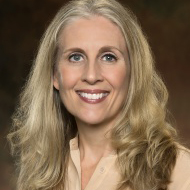A team of Vanderbilt University Medical Center researchers is using advanced simulation modeling techniques to address staffing shortages in acute-care hospitals, with early findings from the work recently published by Nurse Leader.
The shortage of allied health workers is one of the primary issues affecting hospitals in Tennessee, according to researchers, and these shortages are expected to continue. Many hospitals throughout the country are experiencing similar circumstances.
“The ongoing staffing shortages continue to impact our organization. Thus, it was critical for us to develop and test alternative care strategies that not only address these shortages but to maintain financial viability,” said Sandra Simmons, Ph.D., director of Vanderbilt Center for Quality Aging, and leader of the research.
Simulation Modeling
In 2023, VUMC researchers partnered with nursing leadership and Vanderbilt School of Nursing faculty members to design and evaluate different models of nursing care within the adult hospital.
“We’re working to allocate staffing resources strategically using objective data.”
With initial support from the Agency for Healthcare Research & Quality, the team began using discrete event simulation methodology to develop more precise staffing models for both registered nurses and nurse aides, in a role known at VUMC as Care Partners, to meet routine needs for hospitalized patients.
“We created a computerized simulation model that reflects patient-care needs, staffing requirements, and care processes,” Simmons explained. “We’re working to allocate staffing resources strategically, using objective data.”
After seeing early success with a few select hospital units caring for older patients, the investigators decided to expand their approach to examine personnel needs hospital-wide, with additional support from a Tennessee Department of Health grant. The hope is these findings can help resolve some staffing shortages and concerns related to patient safety across the network.
Alternative Care Models
While multiple strategies are being tested, one care model is centered on an “advising nurse” role, in which nurses with at least three years of experience support less-experienced nurses in meeting patient-care needs.
Observational data from the program’s pilot shows that advising nurses spent 62 percent of their time on support tasks, such as supply retrieval or documentation and education to novice nurses. Only 19 percent of their time was spent providing a combination of education and direct clinical-task assistance.
The combination of education and direct clinical-task assistance is focused on more complex care requirements, such as blood transfusions, stroke care, organ transplant care, tube care, and specialized medication delivery.
“Alternative care models, backed by simulation modeling and objective data, could solve the ongoing staffing crises in acute care settings.”
Despite these intriguing findings, a broader application for the model is not yet widely applicable due to the persistent shortage of experienced nurses.
Another care model piloted involved interaction and support through a telehealth application with assistance from a virtual nurse. The program facilitates e-visits by experienced nurses, who signal their arrival with an online “knock” before engaging with the patient and the care team.
The system provides two-way audio and video streaming via the patient’s in-room television. While tasks may be assigned to the nurse remotely, the e-visit can also be used to coach a less-experienced nurse through a complex task.
According to Simmons, the virtual nurse model appears promising based on early roll out on six hospital units, with positive impacts on patient satisfaction, timeliness of discharge and nurse staff efficiency metrics.
Future Directions
Based on initial findings, expansion of the virtual model is planned for more units, and additional team members, such as clinical pharmacists, also will have access to the application.
In addition, the investigators plan to test the virtual model for routine collection of information surrounding social drivers of health. This data will be required by the Centers for Medicare and Medicaid Services in 2025.
Several related projects undertaken by Simmons and her team were funded by the Agency for Healthcare Research and Quality and the State of Tennessee Department of Health. They expect their efforts will result in multiple publications over the next five years.
“This is one of the first publications associated with this project,” Simmons said. “Alternative care models, informed by simulation modeling and objective data, could solve the ongoing staffing crises in acute care settings.”





